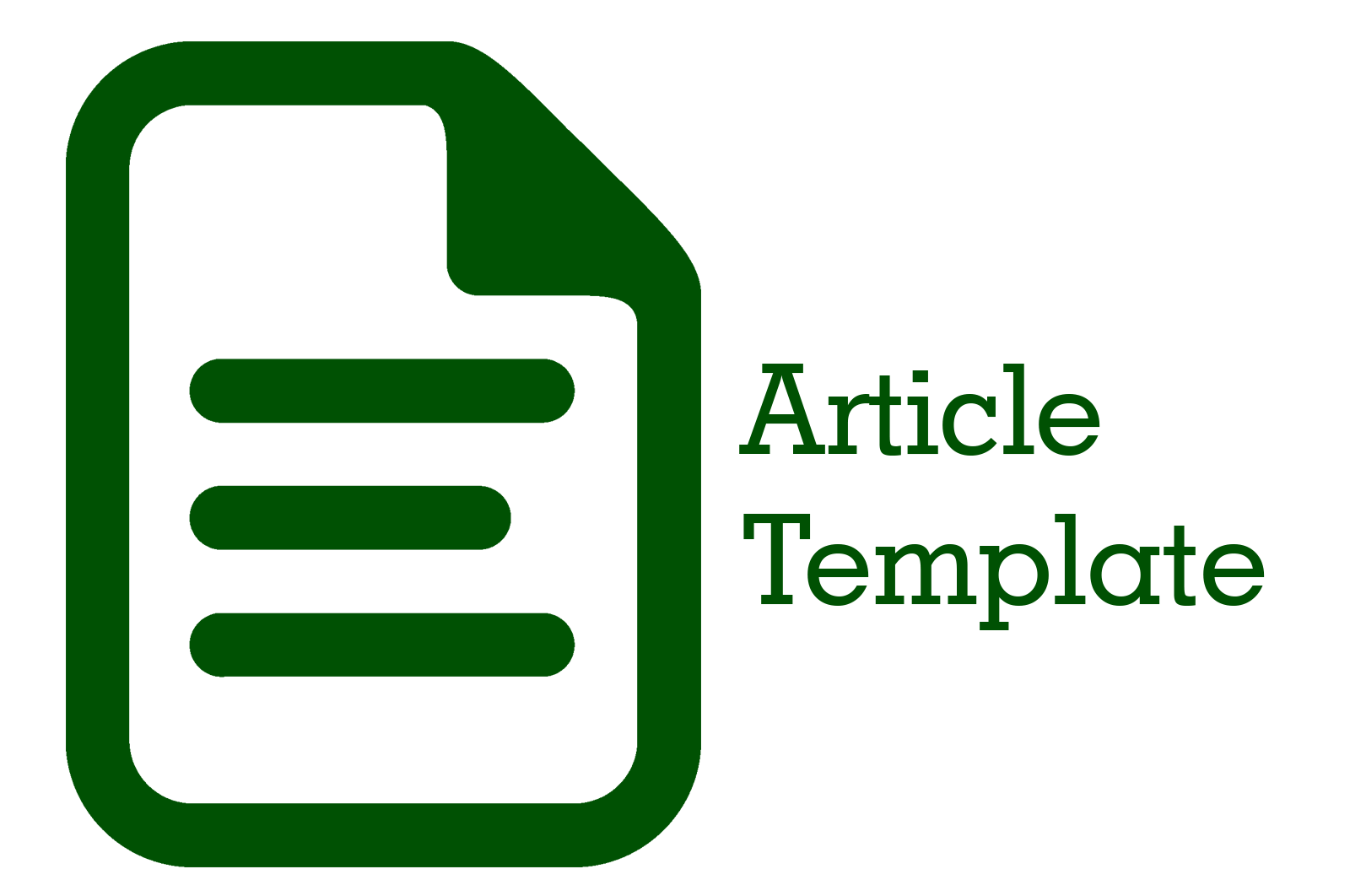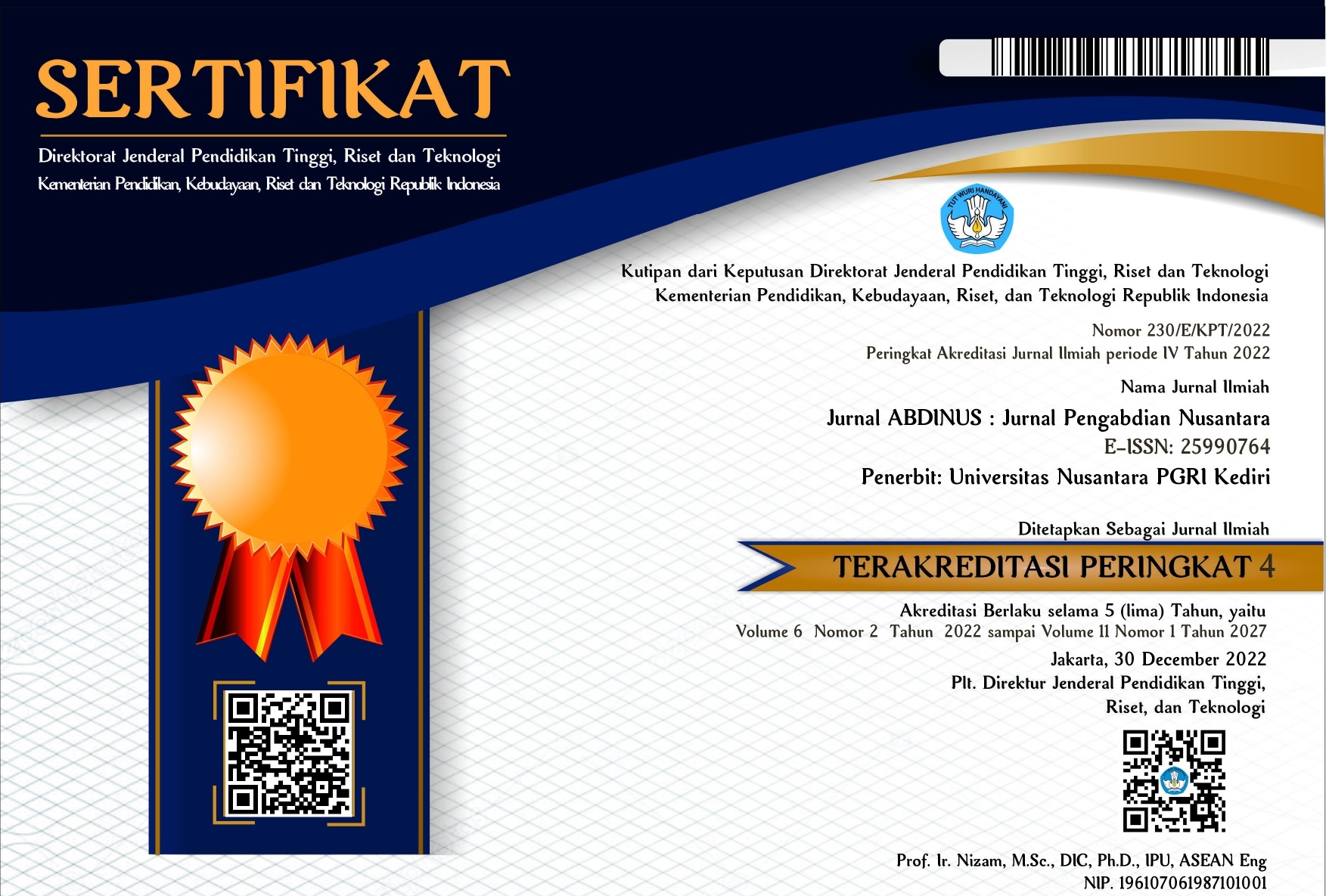Pemanfaatan Media Pembelajaran Berbasis Youtube untuk Meningkatkan Kualitas dan Kreativitas Guru Bahasa Inggris SMK
DOI:
https://doi.org/10.29407/ja.v4i2.15216Keywords:
Using Youtube, Learning Media, Learning OutcomesAbstract
The purpose of this community service is to socialize the use and the ways of utilizing YouTube as an effective learning media in English learning. The target audience are the English teachers of State Vocational School 2 Kediri. The method which was used in this community service was the approach method, the implementation method which consisted of the preliminary step, the socialization and audience step and the evaluation step. This activity was carried out through several stages, the first step was the introduction phase of Youtube. The second step is searching for English media through YouTube facilities and learning implementation. The last step was evaluation and motivation. The result of this community service showed that English teachers of State Vocational School 2 Kediri city could take the advantages of YouTube facilities as the effective English learning media and YouTube media was very popular with high-level students especially students of State Vocational School 2 Kediri city.
Downloads
References
Barbara B. Seels, Rita C. Richey. 1994. Instructional Technology: The definition and Domains of the Field. Washington, DC: Associations and Technology.
Baskoro, A. 2009. Panduan Praktis Searching di Internet. Jakarta : PT Trans Media.
Haag & Keen. (1996). Information Technology: Tomorrow’s Advantage Today. Hammond: McgrawHill College.
Henry & Perceval, Elington, Fred. 1984. A Handbook of Educational technology. London: Kogan Page Ltd. Pentoville Road.
Nurhadiyanto. 2015. Pengaruh Manajemen Sumber Belajar Terhadap Prestasi Belajar Dengan Kemampuan Berfikir Kritis Dan Kemampuan Bahasa Inggris Sebagai Variabel Moderasi Di AMIK Cipta Darma Surakarta. Among Makarti Vol.8 No.15, Juli 2015.
Rumpagaporn, Methinee Wongwanich and I Gusti Ngurah Darmawan. 2007. Students’ Critical Thinking Sskills in a Thai ICT Schools Pilot Project. International Education Journal, 2007, 8(2), 125-132. ISSN 1443-1475 © 2007 Shannon Research Press. http://iej.com.au 125.
Sadiman. 1993. Media Pendidikan: Pengertian, Pengembangan dan. Pemanfaatannya. Jakarta: PT. Rajagrafindo Persada.
Samosir, F. T., Pitasari, D.N., Purwaka & Tjahjono, P. E. 2018. Efektivitas Youtube Sebagai Media Pembelajaran Mahasiswa (Studi Di Fakultas FISIP Universitas Bengkulu), Record and Library Journal, 4(2), 81-91.
Sanjaya, Wina. 2010. Strategi Pembelajaran Berorientasi Standar Proses Pendidikan. Jakarta: Kencana.
Soenarko, B., Aditia Wiguna, F., Eka Putri, K., Primasatya, N., Kurnia, I., Fahmi Imron, I., Damayanti, S., & Guru Sekolah Dasar Fakultas Keguruan dan Ilmu Pendidikan Universitas Nusantara PGRI Kediri, P. (2018). Pelatihan Pembuatan Media Pembelajaran Interaktif dengan Memanfaatkan Bahan Bekas untuk Guru Sekolah Dasar pada Anggota Gugus 2 Kecamatan Ringinrejo Kabupaten Kediri. 1(2), 96–106. http://ojs.unpkediri.ac.id/index.php/PPM
Sukarta , I Nyoman, S.Pd., M.Si, dkk. 2012. Pelatihan Pembelajaran Inovatif Bagi Guru-Guru Di Smp Negeri 2 Kubu. Jurnal Pengabdian Kepada Masyarakat. Vol.1 Juli 2012. ISSN: 1410-4369.
Tilaar. 1991. Manajemen Pendidikan Nasional. Kajian Pendidikan Masa Depan. Bandung: PT Remaja Rosdakarya
Usman, B., & Asnawir, H. 2002. Media pembelajaran. Bandung: Ciputat Pers.
Wulandari, Nadiah; Sjarkawi, dan Damris. 2011. Pengaruh Problem Based Learning Dan Kemampuan Berpikir Kritis Terhadap Hasil Belajar Mahasiswa. Tekno-Pedagogi Vol.1 No. 1 Maret 2011 : 14-24 ISSN 2088-2050.















